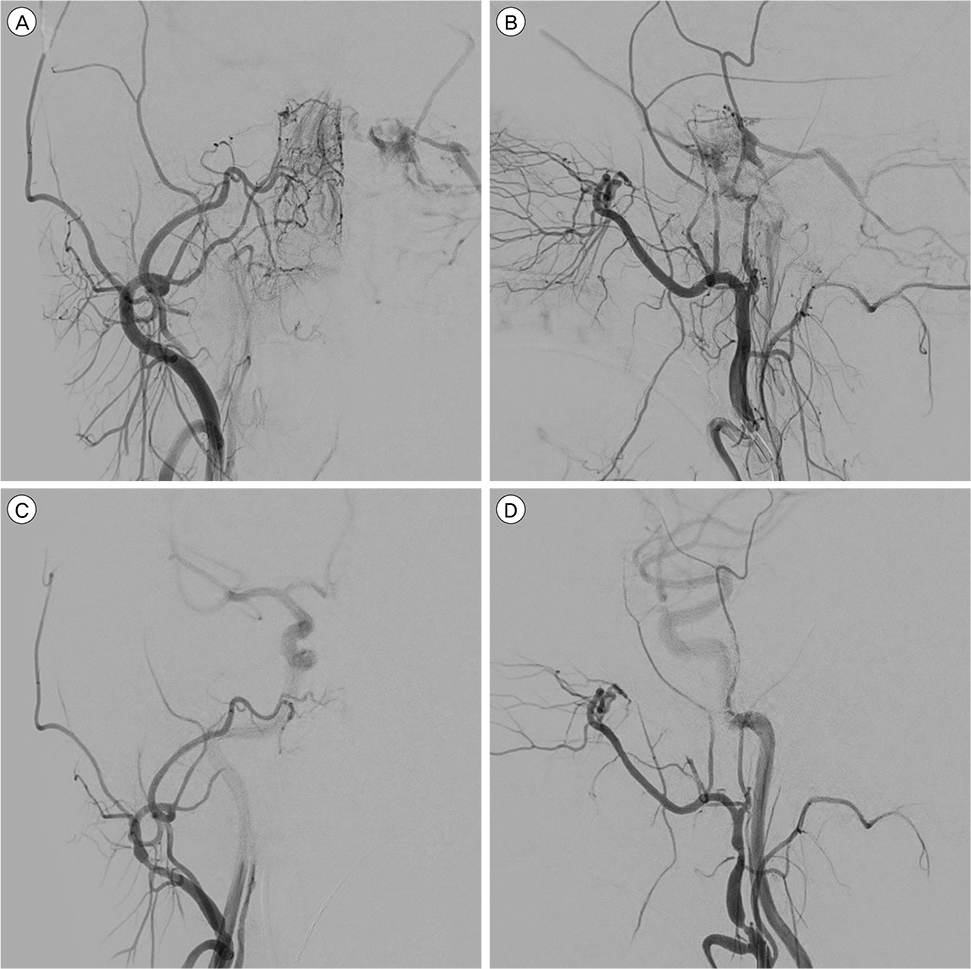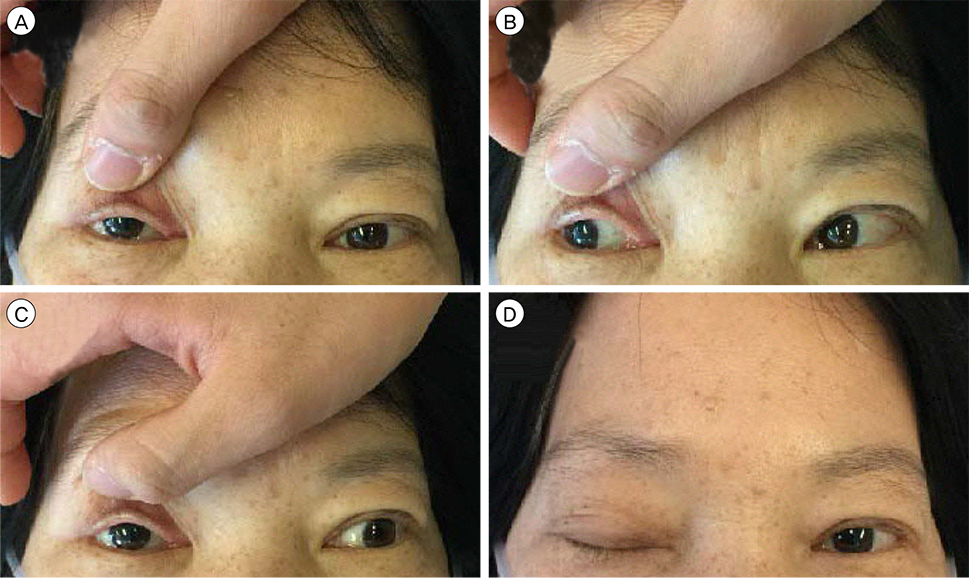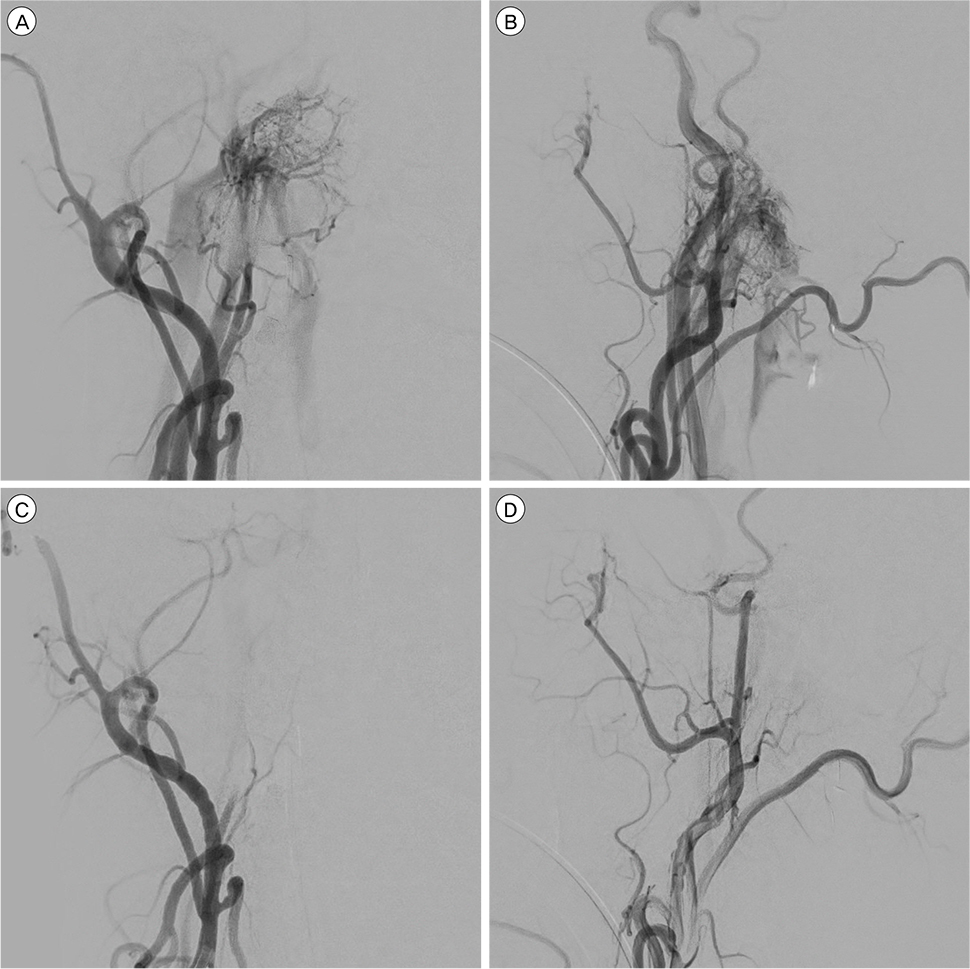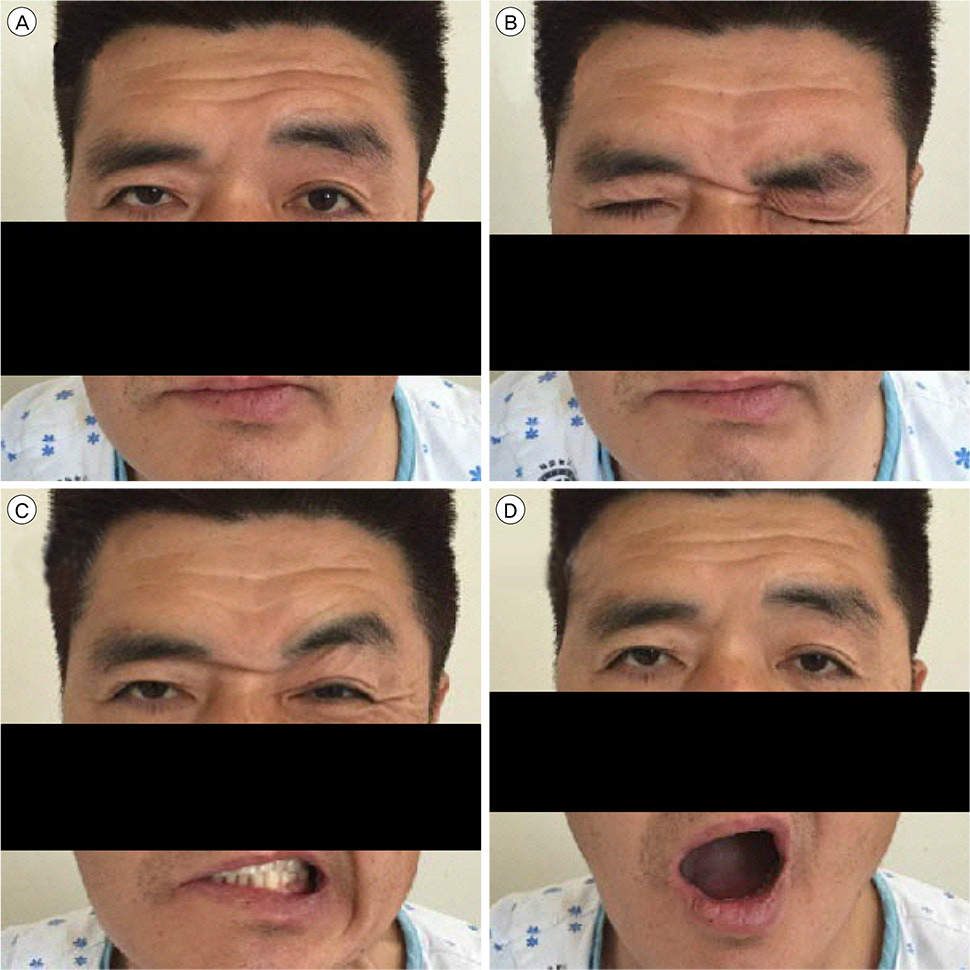J Cerebrovasc Endovasc Neurosurg.
2017 Sep;19(3):189-195. 10.7461/jcen.2017.19.3.189.
Cranial Nerve Palsy after Onyx Embolization as a Treatment for Cerebral Vascular Malformation
- Affiliations
-
- 1Department of Neurosurgery, Wonju Severance Christian Hospital, Yonsei University Wonju College of Medicine, Wonju, Korea. nschoi@yonsei.ac.kr
- KMID: 2393501
- DOI: http://doi.org/10.7461/jcen.2017.19.3.189
Abstract
- The Onyx liquid embolic system is a relatively safe and commonly used treatment for vascular malformations, such as arteriovenous fistulas and arteriovenous malformations. However, studies on possible complications after Onyx embolization in patients with vascular malformations are limited, and the occurrence of cranial nerve palsy is occasionally reported. Here we report the progress of two different types of cranial nerve palsy that can occur after embolization. In both cases, Onyx embolization was performed to treat vascular malformations and ipsilateral oculomotor and facial nerve palsies were observed. Both patients were treated with steroids and exhibited symptom improvement after several months. The most common types of neuropathy that can occur after Onyx embolization are facial nerve palsy and trigeminal neuralgia. Although the mechanisms underlying these neuropathies are not clear, they may involve traction injuries sustained while extracting the microcatheter, mass effects resulting from thrombi and edema, or Onyx reflux into the vasa nervorum. In most cases, the neuropathy spontaneously resolves several months following the procedure.
MeSH Terms
Figure
Cited by 1 articles
-
Transvenous Onyx embolization of cavernous sinus dural arteriovenous fistula using a balloon catheter in the arterial side for flow control
Chul-Hoo Kang, Jieun Roh, Jeong A Yeom, Sang Won Lee, Seung Kug Baik
J Neurocrit Care. 2019;12(2):102-107. doi: 10.18700/jnc.190089.
Reference
-
1. Abud TG, Nguyen A, Saint-Maurice JP, Abud DG, Bresson D, Chiumarulo L, et al. The use of Onyx in different types of intracranial dural arteriovenous fistula. AJNR Am J Neuroradiol. 2011; 12. 32(11):2185–2191.
Article2. American Society of Interventional and Therapeutic Neuroradiology. Arteriovenous fistulae of the CNS. AJNR Am J Neuroradiol. 2001; 09. 22:8 Suppl. S22–S25.3. Arat A, Inci S. Treatment of a superior sagittal sinus dural arteriovenous fistula with Onyx: technical case report. Neurosurgery. 2006; 07. 59:1 Suppl 1. ONSE169–ONSE170. discussion ONSE 169-70.
Article4. Chen J, Crane B, Niparko J, Gandhi D. Direct intraoperative confirmation of penetration of ethylene vinyl alcohol copolymer (Onyx) into the vasa nervosa of the facial nerve. J Neurointerv Surg. 2012; 11. 4(6):435–437.
Article5. Elhammady MS, Peterson EC, Aziz-Sultan MA. Onyx embolization of a carotid cavernous fistula via direct transorbital puncture. J Neurosurg. 2011; 01. 114(1):129–132.
Article6. Gallas-Torreira MM, Reboiras-Lopez MD, Garcia-Garcia A, Gandara-Rey J. Mandibular nerve paresthesia caused by endodontic treatment. Med Oral. 2003; Aug-Oct. 8(4):299–303.7. Ge XX, Spector GJ, Carr C. The pathophysiology of compression injuries of the peripheral facial nerve. Laryngoscope. 1982; 10. 92:10 Pt 2 Suppl 31. 1–15.8. Hu YC, Newman CB, Dashti SR, Albuquerque FC, McDougall CG. Cranial dural arteriovenous fistula: transarterial Onyx embolization experience and technical nuances. J Neurointerv Surg. 2011; 03. 3(1):5–13.
Article9. Huang Q, Xu Y, Hong B, Li Q, Zhao W, Liu J. Use of onyx in the management of tentorial dural arteriovenous fistulae. Neurosurgery. 2009; 08. 65(2):287–292. discussion 292-3.
Article10. Kupfer TJ, Aumann K, Laszig R, Meckel S. Peripheral facial palsy after embolization of a dural arteriovenous fistula with Onyx®. HNO. 2011; 05. 59(5):465–469.11. Logigian EL, Mcinnes JM, Berger AR, Busis NA, Lehrich JR, Shahani BT. Stretch-induced spinal accessory nerve palsy. Muscle Nerve. 1988; 02. 11(2):146–150.
Article12. Lv X, Jiang C, Zhang J, Li Y, Wu Z. Complications related to percutaneous transarterial embolization of intracranial dural arteriovenous fistulas in 40 patients. AJNR Am J Neuroradiol. 2009; 03. 30(3):462–468.
Article13. Nogueira RG, Dabus G, Rabinov JD, Eskey CJ, Ogilvy CS, Hirsch JA, et al. Preliminary experience with onyx embolization for the treatment of intracranial dural arteriovenous fistulas. AJNR Am J Neuroradiol. 2008; 01. 29(1):91–97.
Article14. Nyberg EM, Chaudry MI, Turk AS, Turner RD. Transient cranial neuropathies as sequelae of Onyx embolization of arteriovenous shunt lesions near the skull base: possible axonotmetic traction injuries. J Neurointerv Surg. 2013; 07. 5(4):e21.
Article15. Rezende MT, Piotin M, Mounayer C, Spelle L, Abud DG, Moret J. Dural arteriovenous fistula of the lesser sphenoid wing region treated with Onyx: technical note. Neuroradiology. 2006; 02. 48(2):130–134.
Article16. Stiefel MF, Albuquerque FC, Park MS, Dashti SR, McDougall CG. Endovascular treatment of intracranial dural arteriovenous fistulae using Onyx: a case series. Neurosurgery. 2009; 12. 65:6 Suppl. 132–139. discussion 139-40.
Article17. Teufack S, Tjoumakaris S, Gonzalez F, Dumont A, Rosenwasser R, Jabbour P. Cranial nerve palsy after embolization of giant cavernous carotid aneurysm with Onyx HD-500: case series and review of the literature. JNH Journal. 2011; 6(1):22–24.
Article18. Trivelato FP, Abud DG, Ulhoa AC, Menezes Tde J, Abud TG, Nakiri GS, et al. Dural arteriovenous fistulas with direct cortical venous drainage treated with Onyx: a case series. Arq Neuropsiquiatr. 2010; 08. 68(4):613–618.
Article19. Weber W, Siekmann R, Kis B, Kuehne D. Treatment and follow-up of 22 unruptured wide-necked intracranial aneurysms of the internal carotid artery with Onyx HD 500. AJNR Am J Neuroradiol. 2005; 09. 26(8):1909–1915.
- Full Text Links
- Actions
-
Cited
- CITED
-
- Close
- Share
- Similar articles
-
- Complication Associated with Onyx Embolization of Spinal Cord Arteriovenous Malformation
- The Etiology and Clinical Feature of the Third, Fourth, and Sixth Cranial Nerve Palsy
- Delayed cranial nerve palsy after successful coil embolization in cavernous sinus lesion
- Foreign body granuloma reaction after endovascular therapy of an unruptured right frontal arteriovenous malformation
- Reversible Abducens Nerve Palsy Following Transvenous Embolization of Cavernous Sinus Dural Arteriovenous Fistula





